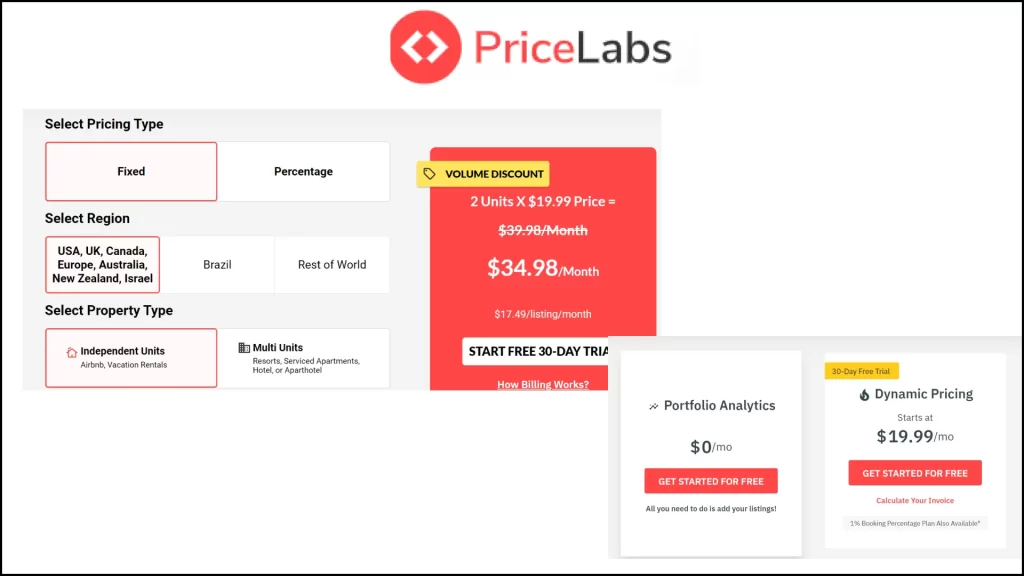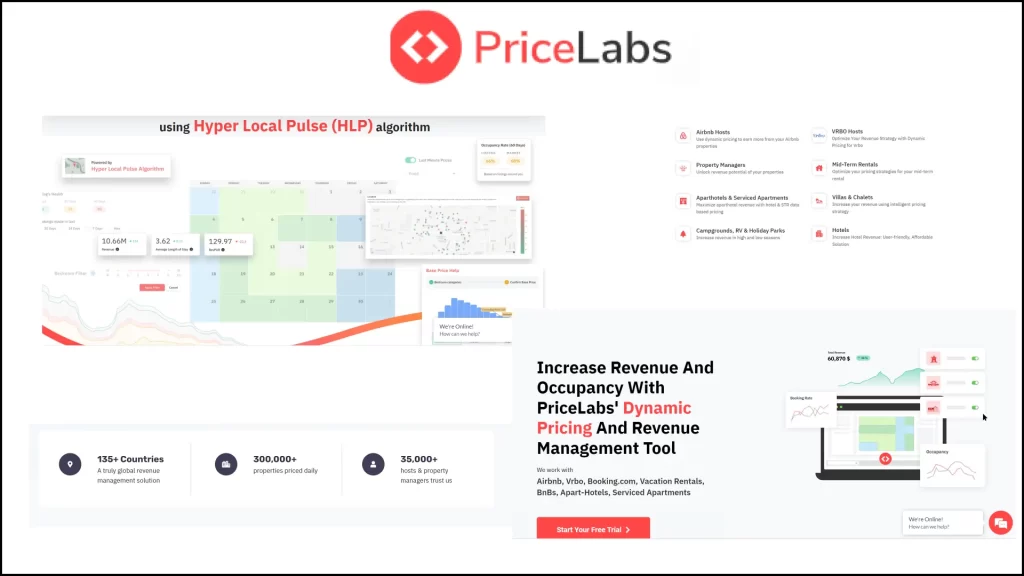PriceLabs is a dynamic pricing system designed to optimize revenue for property managers and hosts in the hospitality industry. Utilizing an advanced algorithm, PriceLabs analyzes market data, demand patterns, and seasonal trends to recommend daily rates. This system automates pricing adjustments, allowing businesses to respond to real-time supply and demand without manual intervention.
The dynamic pricing model is particularly beneficial for various types of accommodations, including Airbnb properties, hotels, and vacation rentals. It helps maximize revenue by adjusting prices based on several factors, such as time of year, day of the week, and local events or holidays. PriceLabs’ transparent approach and user-friendly interface make it a valuable tool for those looking to enhance their revenue strategy through intelligent pricing.
Understanding Pricelabs
What is Pricelabs software
The core functionality of PriceLabs revolves around its dynamic pricing and revenue management capabilities for the hospitality industry. Here are the key features:
Dynamic Pricing: PriceLabs provides automated daily rate updates based on market data, demand, and your listing’s performance. This helps in optimizing the pricing strategy for various types of accommodations.
Market Dashboard: Access to market data for vacation rentals anywhere in the world, which can be used to make informed pricing decisions.
Portfolio Analytics: A real-time reporting system that displays important vacation rental KPIs and listing-level performance data. This feature allows property managers to spot actionable trends in their bookings and make data-driven decisions.
Revenue Estimator Pro: A tool within PriceLabs that helps create revenue estimates based on market data, aiding in forecasting and planning.
Pricing Strategies: Guidance on how to use PriceLabs for various scenarios, including preventing gap creation using minimum stay settings and optimizing pricing for midterm rentals.
Integration: PriceLabs integrates with over 100 Property Management Systems (PMSs) and channel managers like Airbnb and Vrbo, providing seamless automation of pricing adjustments.
These functionalities collectively empower property owners and managers to maximize their revenue potential through strategic and data-driven pricing adjustments.
The Importance of Pricelabs Dynamic pricing
PriceLabs’ dynamic pricing is a critical component in revenue management for the hospitality industry. Its importance lies in several key areas:
Maximizing Revenue: By adjusting prices based on real-time demand and market conditions, PriceLabs helps businesses optimize their revenue potential.
Increased Competitiveness: The ability to respond quickly to market changes with dynamic pricing keeps businesses competitive.
Improved Customer Satisfaction: Tailoring prices to customer preferences and behaviors can enhance satisfaction and loyalty.
Data-Driven Decisions: Utilizing analytics and market data, PriceLabs enables informed decision-making for pricing strategies.
Efficiency and Automation: The automation of pricing adjustments saves time and reduces the need for manual intervention, making operations more efficient.
Dynamic pricing is not just about lowering prices to fill inventory; it’s about finding the optimal price point for each product at every moment, which can sometimes mean increasing prices during periods of high demand. This approach ensures that businesses are not leaving money on the table and are capitalizing on opportunities to generate more revenue¹. In essence, dynamic pricing as part of revenue management is about selling the right product to the right customer at the right time for the right price.
Key Features of Pricelabs
Market Report
PriceLabs provides market insights through its Market Dashboards, which are a key feature of the platform. These insights help property managers and hosts to optimize their pricing strategies, stay ahead of competitors, and make informed investment decisions by leveraging data-driven analytics layered on top of user-controlled inputs and settings. Here’s how they work:
Automated Dashboards: The Market Dashboards are fully automated and personalized, offering users actionable insights through easy-to-understand graphs and data visualizations.
Daily Updates: They are updated daily to reflect the latest market trends, competitor pricing, and performance metrics.
Customizable Data Views: Users can customize the data views to focus on the information that is most relevant to their needs.
Key Performance Indicators (KPIs): The dashboards detail important KPIs such as estimated revenue, average Revenue Per Available Room (RevPAR), occupancy rates, Average Daily Rate (ADR), number of active listings, and number of bookings.
Comparative Analysis: Users can compare current performance with past data to identify trends and make informed decisions.
Market Research: PriceLabs’ dashboards enable users to track short-term rental (STR) booking data for their location, helping them understand what is happening in their market.
Pricing Engine
The algorithm and mechanics behind PriceLabs’ pricing engine are designed to optimize pricing for rental properties by analyzing a multitude of factors. This multi-layered approach allows PriceLabs to provide dynamic, data-driven pricing recommendations that are tailored to the specific needs and performance of each property. Here’s a breakdown of how it works:
Base Price Setting: The algorithm starts with a base price, which is the average nightly rate around which dynamic adjustments are made. This base price is determined by the property’s attributes and current performance.
Seasonal Factors: It incorporates seasonal factors derived from historical data of rentals and hotels in the area. For the latest algorithm, Hyper Local Pulse (HLP), seasonality is calculated based on hyper-local data, while for older algorithms, it’s based on a broader region or city.
Demand Factor: The engine integrates a demand factor that accounts for day-of-week trends, events, and holidays. This helps forecast high and low demand periods, ensuring responsive pricing to market dynamics.
Pacing Factor: In some markets, a pacing factor is added when projected demand significantly diverges from historical patterns. This is calculated by assessing how far ahead or behind a market’s occupancy is compared to previous years.
Customizations and Overrides: The algorithm then adds any pricing customizations set at the listing, group, or account level, including last-minute discounts, orphan day prices, and other preferences. Date-specific overrides are also factored in.
Minimum and Maximum Price Limits: Finally, the engine enforces minimum and maximum price limits set by the user to ensure prices do not fall below or exceed specified thresholds. Users can establish different limits for specific seasons and holidays.
Integration with Rental Platforms
PriceLabs integrates with short-term rental platforms through a comprehensive system that connects with various property management systems (PMS) and channel managers. This integration capability is a key feature of PriceLabs, enabling property managers to efficiently manage pricing strategies and optimize revenue across their entire portfolio of short-term rental properties. Here’s how the integration process typically works:
Direct Integration: PriceLabs directly integrates with over 100 PMS and channel managers, including popular platforms like Airbnb and Vrbo. This allows for seamless synchronization of pricing recommendations across multiple channels.
API Connectivity: For platforms where direct integration may not be available, PriceLabs offers an open API framework. This allows PMSs to connect with PriceLabs and send price recommendations to booking channels.
User-Friendly Interface: The integration is designed to be user-friendly, allowing property managers to easily connect their PMS with PriceLabs and start using dynamic pricing without extensive technical knowledge.
Automated Updates: Once integrated, PriceLabs can automatically update prices across all connected platforms, ensuring consistent pricing and maximizing revenue potential.
Customization: Users have the option to customize the integration settings, such as setting minimum and maximum rates, minimum stay requirements, and other pricing rules, which are then applied across all platforms.
Pros and Cons of Using Wheelhouse
Pros of using Wheelhouse
PriceLabs is a dynamic pricing and revenue management software that offers several advantages for short-term rental operators and hospitality businesses. These benefits suggest that PriceLabs can be a valuable tool for those looking to optimize their pricing strategy and improve their business performance in the hospitality sector.
Here are some of the pros of using PriceLabs:
Dynamic Pricing: PriceLabs automates the process of adjusting pricing, which can increase occupancy and maximize revenue.
Ease of Use: Users have found the interface to be intuitive and easy to work with.
Customer Support: The customer support is highly rated, with quick responses to questions and the ability to connect directly with key team members.
Integration: It integrates seamlessly with various hosting software, making it easier to manage pricing across different platforms.
Market Data: Provides great market data that can help in positioning rental properties for maximum profitability.
Automation: The software fully automates the pricing process, saving time and effort for the business owners.
Revenue Increase: Some users have reported that using PriceLabs has doubled their revenue with less wear and tear on the properties.
Cons of using Wheelhouse
These cons highlight the importance of users being prepared to invest time in learning and managing the system to ensure it meets their pricing strategy needs effectively. While PriceLabs offers many benefits, there are some potential drawbacks to consider:
Additional Costs: Some users feel that having to pay an extra fee for market analysis is not ideal.
Learning Curve: The platform can be confusing and not very straightforward for new users.
Active Management: It requires regular monitoring and adjustments, as the pricing doesn’t manage itself.
Complex Customizations: The configuration for automatic updates can be difficult, with multiple levels of customization that may not be easily understandable.
Marketplace Dashboards: There is feedback suggesting that the marketplace dashboards lack development and may not provide much value.
User Interface: Although improved, some users feel that the user interface lags behind other similar tools.
Data Display: Issues have been reported with the display of sold nights not showing the correct values.
Pricing Of Pricelabs

PriceLabs offers a variety of pricing plans tailored to the number of properties you manage. Here’s a detailed breakdown of their pricing as of 2024:
Free Trial: PriceLabs provides a 30-day free trial with no credit card required. During the trial, you have access to all the features of Dynamic Pricing.
Post-Trial Pricing: After the trial, there’s a flat monthly pricing with no commission and no long-term contracts.
Dynamic Pricing: The cost for Dynamic Pricing varies based on the number of properties:
- 1 property: $19.90 per month
- 2-5 properties: $14.99 for each property after the first
- 6-15 properties: $10.99 for each property after the fifth.
- Market Dashboard: This is a separate product from Dynamic Pricing and has its own pricing:
- Up to 1000 listings: $9.99 per month
- Up to 5000 listings: $19.99 per month
- Up to 10,000 listings: $39.99 per month.
These plans are designed to cater to different sizes of property management operations, from individual hosts to large property managers. It’s important to note that the Market Dashboard, which provides market insights and analytics, is billed separately from the Dynamic Pricing tool.
Conclusion
In conclusion, PriceLabs is a sophisticated dynamic pricing and revenue management tool that can be highly beneficial for property managers and hosts in the short-term rental market. Its strengths lie in its ability to automate pricing strategies, integrate with various property management systems, and provide valuable market data insights. Users can expect an intuitive interface and responsive customer support, which enhances the overall user experience.
However, it’s important to consider the potential downsides. The learning curve for new users, the need for active management, and the additional costs for market analysis are factors that could influence the decision to use this service. The complexity of customizations and the development of marketplace dashboards also require attention to ensure they align with the user’s needs.
The pricing structure of PriceLabs is designed to accommodate a range of users, from individuals with a single property to large-scale operations with multiple listings. The clear, flat-rate monthly pricing post-trial is a plus for those wary of commission-based models, and the separate billing for the Market Dashboard allows users to choose services based on their specific requirements.
Overall, PriceLabs offers a powerful set of tools that, when used effectively, can significantly enhance revenue and operational efficiency. It’s a solution well-suited for those willing to invest the time to understand and leverage its full potential to stay competitive in the dynamic market of short-term rentals.



